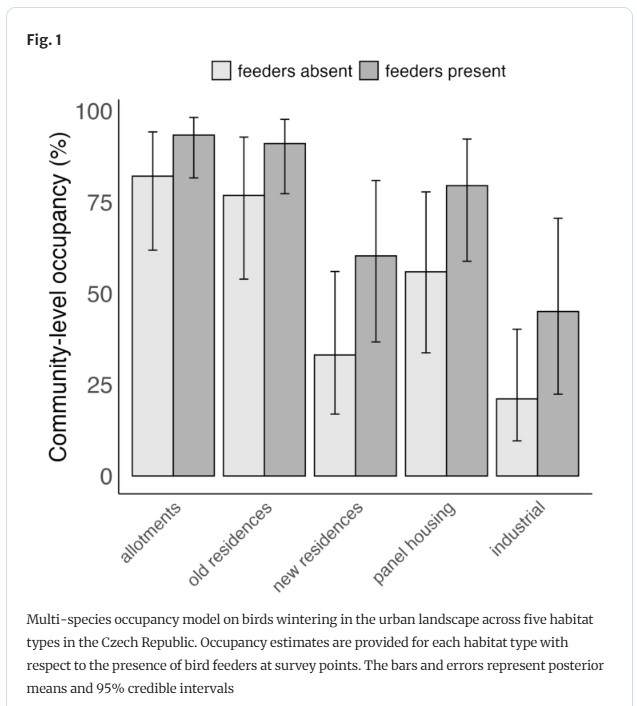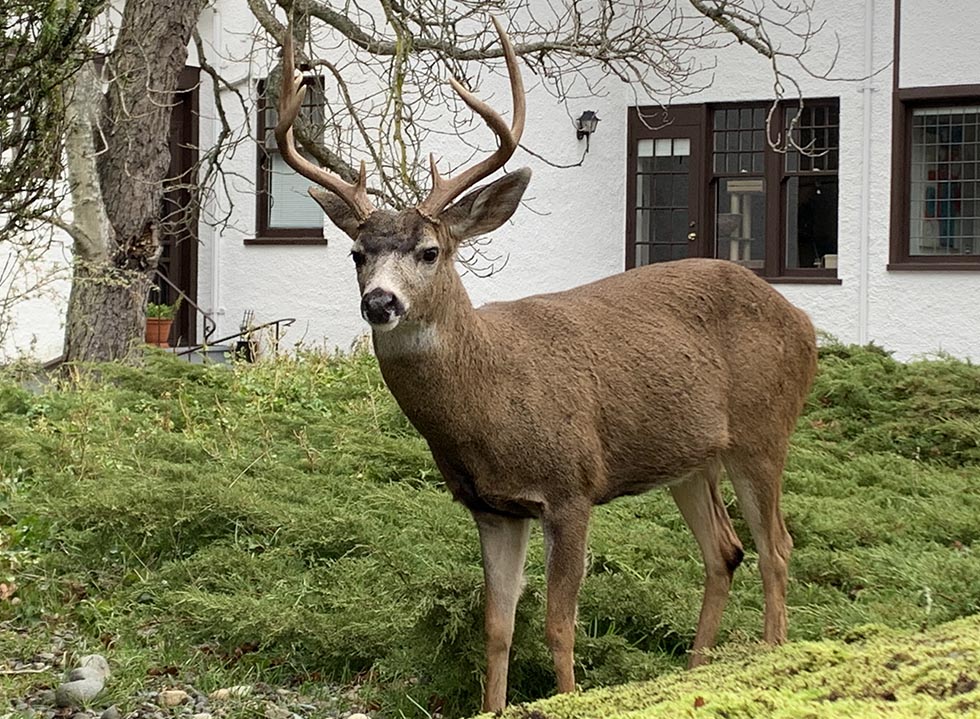As we discussed in class recently, urbanization often reshapes bird communities, leading to homogenization. Urban areas then become dominated by more adaptable generalists like pigeons and crows. These species usually adjust well to the challenges and opportunities that city life can bring new foods sources, different predator dynamics, and improvised nesting spaces. One other interesting factor that city life can offer to birds, but not often discussed in research, is the food opportunities during winter months. From bird feeders to trash bins, the life of a bird in urban winter is quite different from its natural environment.
To better understand this difference of how urban environments can shape birds’ behavior and distribution during winter, researchers in the Czech Republic (Šálek et al. 2024) investigated bird abundance in 3 small to medium size cities surrounded by agricultural fields, grasslands, and forests. During the 2019-2020 winter they recorded bird abundance and occupancy across various urban habitats. During this time, the authors recorded a total of 4,272 birds of 40 different species. They also found that the most species rich habitats were allotments and old residential areas. In addition, they found that bird feeders were particularly appealing for blue tits and tree sparrows, even in areas with less green areas.

I believe this study highlights important implications for the conservation of urban birds during wintertime, as we learn what types of environments act as refugees during winter, and what can be done for less appealing habitats. Supplementary feeding is often a point of debate in many of our classes, with many arguing that feeders have the potential to increase the bird population beyond its carrying capacity. However, this paper shows the importance of feeders, especially in low quality habitats like industrial areas or new residential developments. Ultimately -and as usual- the use of bird feeders as a conservation tool in urban areas depends on the context of the location. Nonetheless, it is important to keep investigating how birds deal with winter in urban settings, as these answers could help us to shape policies as we learn how to better accommodate bird biodiversity in urban environments all year round.
Source: Šálek, M., Bažant, M., Vrána, J. et al. Urban refuges in winter: the role of habitat characteristics and supplementary feeding in shaping bird occupancy and abundance. Urban Ecosyst 28, 1–10 (2025). https://doi-org.prox.lib.ncsu.edu/10.1007/s11252-024-01632-z

